
Are compound exercises (exercises that train two or more muscle groups) enough for maxing muscle hypertrophy?
And are isolation exercises (exercises that train one muscle group) just a waste of time?
A couple of scientific papers have suggested this. Let us examine them.
Part I: Science Says Isolation Exercises Are Useless?
A 2015 Brazillian study by Gentil et al. compared lat pulldowns to barbell biceps curls for elbow flexor growth. The elbow flexors consisted of the biceps and brachialis muscles in this case.
After 10 weeks of training, increases in elbow flexor thickness were similar between the lat pulldown and biceps curl training.
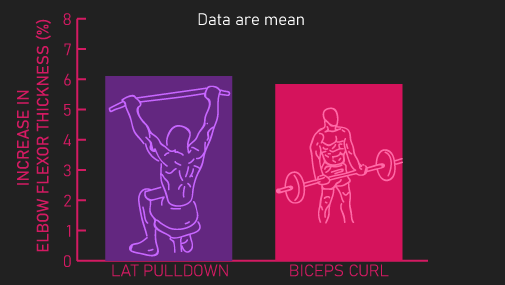
Suggesting an isolation exercise (the biceps curl) does not produce any more growth than a compound exercise (the lat pulldown)
However, this study does not tell us if compared to only performing lat pulldowns, the combination of lat pulldowns and curls could enhance elbow flexor growth.
Fortunately, another 2013 Brazillian study by Gentil et al. evaluated this.
Group one only trained the bench press and lat pulldown.
Group two performed the bench press and lat pulldown with the addition of a biceps curl and triceps extension (it was not clear what precise triceps extension was used).
Both groups performed 3 sets of 8-12 repetitions to failure on each exercise per session. This meant training volume was not equated between both groups. As group two performed two additional isolation exercises, they would have accumulated higher training volumes.
Despite this, after 10 weeks of training, increases in elbow flexor thickness were similar between both groups.
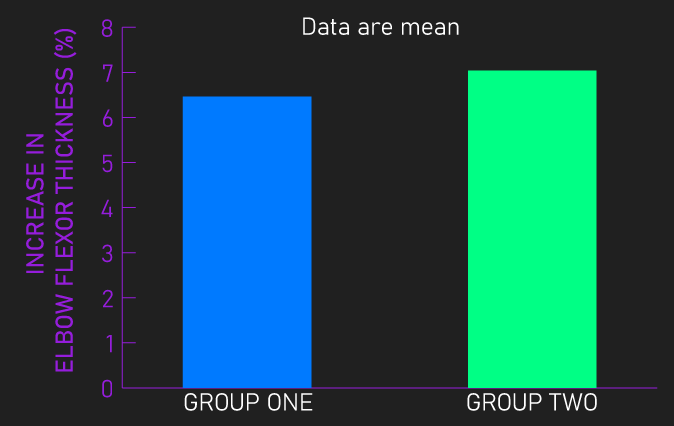
Indicating adding biceps curls to lat pulldown training does not enhance elbow flexor growth versus only training lat pulldowns.
Unfortunately, the researchers did not assess triceps growth in this study.
In 2015, another Brazillian study by Franca et al. further supported these previous findings.
Group one trained with the following training program, consisting of only compound exericses:
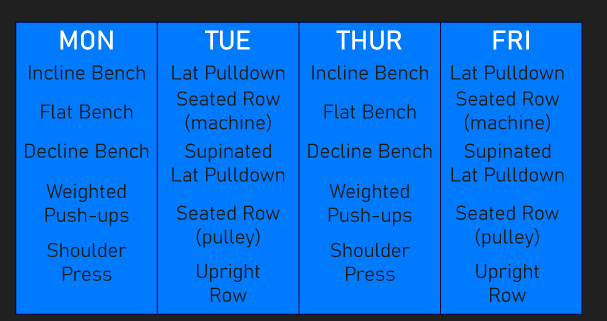
Group two trained with all the same compound exercises, but performed two added isolation exercises per session:
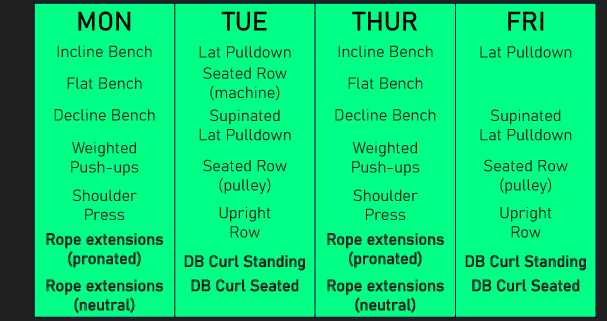
Both groups performed 3 sets of 10-15 reps for each exercise per session, again meaning group two would have accumulated higher training volumes.
After 8 weeks of training, increases in arm circumference were statistically similar between both groups.
Suggesting yet again that additional isolation exercises provide no further muscle growth benefit.
These three research papers (the ones just overviewed) were later included in a 2017 review study by Gentil et al., in which it was stated “the addition of SJ exercises to an MJ exercise program does not seem to increase gains in muscle size and strength”.
SJ stands for single-joint, which are isolation exercises, while MJ stands for multi-joint, which are compound exercises.
Before moving on, it’s worth noting that since 2017, 4 additional studies (one, two, three, and four) all published by Barbalho et al. further indicate that additional isolation exercises to a compound exercise program do not enhance muscle growth.
However, it’s recently been established much research by Barbalho et al. contains improbable and atypical data. The data in these studies cannot be trusted, perhaps because the data is illegitimate.
Thus, I believe we cannot use these studies as additional evidence.
Before moving on, if you’re curious about creating an effective training program for muscle hypertrophy, our high quality partner Alpha Progression can help. It can generate a highly effective program for you, track your workouts live with in-built progression recommendations, provide graphs displaying your long term progress, and it has a massive exercise database with more than 550 exercises.
Click HERE (the link opens in a new tab) to get a free 2 week trial of the apps features. If you like it and go beyond, the link also gives you 20% off a subscription!
We never promote trash at the House of Hypertrophy, so rest assured the app is high quality. The reviews speak to this, 4.8 starts (based on more than 7,000 reviews) on Google play, and 4.9 stars in Apple’s store (based on nearly 400 ratings).
Part II: Did the Researchers Overlook Anything?
So it’s clear some researchers speculate compound exercises may indeed max hypertrophy.
But as many of you are probably thinking, surely there exist limitations and shortcomings.
Indeed, I believe there are, and many of these limitations were nicely discussed in a paper by Ribeiro et al. that was directly responding to the Gentil et al. review paper
Firstly, only growth of the elbow flexors and arms were measured, and only at a single region of these muscles (roughly the midpoints of the muscles).
This begs the question, what about other regions of these muscles, and what about other muscle groups?
Examining the question about other regions of the same muscle first, I believe there’s sufficient evidence to believe regional hypertrophy exists.
That is, an exercise for a muscle does not grow all regions of that muscle equally, rather it grows some regions more than others.
For example, Kawakami et al. found after subjects trained overhead extensions for 16 weeks, the triceps mainly increased in cross-sectional area in the middle to slightly upper regions. But in the most upper and lower regions of the muscle, little growth was experienced.
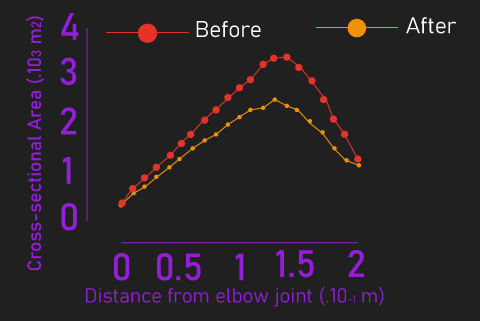
Likewise, Ema et al. found after leg extension training for 12 weeks, growth not only differed between the quadriceps heads but within each of these muscle heads, growth differed between the upper and lower regions of them.
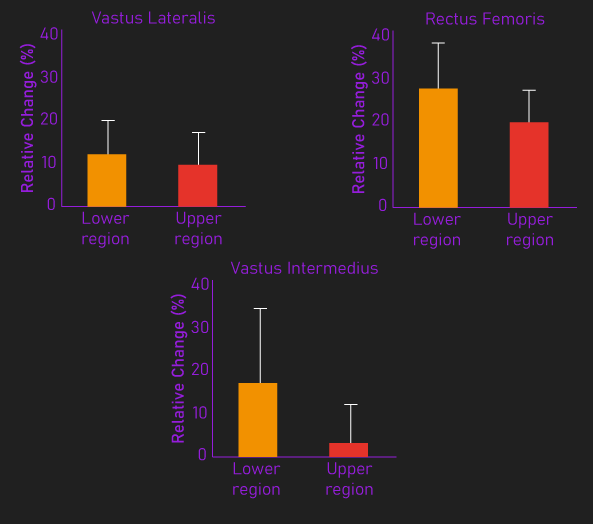
This data might suggest that if we wanted to maximize growth across as many regions of a muscle as possible, using a range of exercises that biomechanically differ could work.
The biomechanically different exercises, when compared to each other, may target different regions of the muscle more so than others, so collectively they maximize growth across the regions of a muscle.
Isolation exercises would be necessary and pivotal in this.
A 2021 Brazillian study by Costa et al. supports this.
22 men were allocated into a non-varied or varied group.
Both groups trained 3 days per week for 8 weeks
The non-varied group did train with both compound and isolation exercises, but they performed the exact same exercises on the 3 training days per week.
The varied group, on each of the three days per week, performed different compound and isolation exercises for their muscle groups.
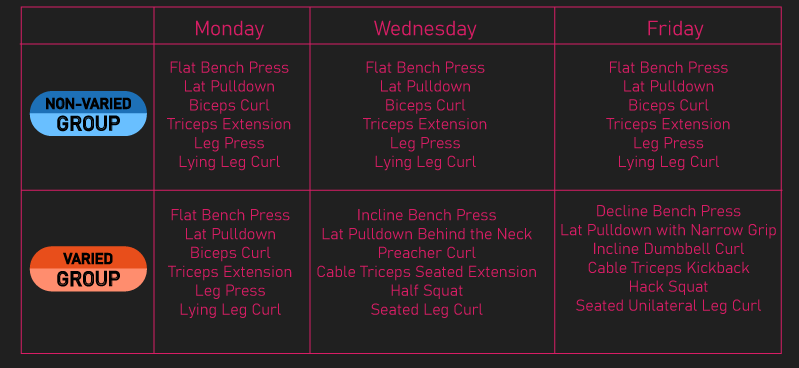
Before and after the study, the researchers measured the thickness of the upper, middle, and lower regions of the rectus femoris, vastus lateralis, elbow flexors, and triceps.
In a couple of measured regions, increases were similar between both groups. However, in other measured regions, gains favored the varied group. Thus, the varied group experienced the most regional hypertrophy overall.
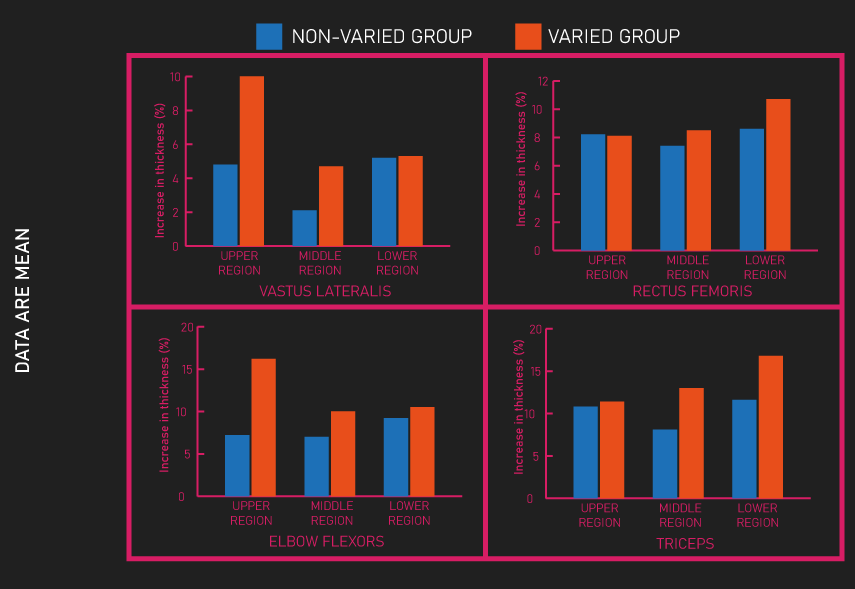
As a result, this study suggests performing a couple of different exercises for a muscle group (specifically 3 different isolation and compound movements per week) promotes growth across regions of a muscle.
Moving forward, other muscle groups not examined in the three previously mentioned studies are likely minimally trained with compound exercises.
The lateral deltoid abducts the shoulder joint. No compound exercise significantly involves this motion, so isolation exercises that do this (like lateral raises) are likely required to maximally grow the lateral deltoid.
The calf muscles plantarflex the ankle, a motion that no compound exercise significantly involves. So plantarflexion exercises like seated and standing calf raises are likely needed to max calf hypertrophy.
Compound exercises training the hamstrings primarily do so via hip extension movement.
However, the hamstrings also flex the knee, and there’s evidence different parts of the hamstrings may be recruited during either hip extension and knee flexion motion. Thus, knee flexion exercises (like leg curls) are probably needed to max regional hamstring hypertrophy.
Compound exercises that train the quadriceps seem to grow the vasti muscle heads very well, but not the rectus femoris (one and two). Leg extensions and reverse nordic curls significantly develop the rectus femoris, so one of these isolation exercises are likely necessary to optimally grow all quadricep heads.
As for the triceps, two studies (one and two) indicate the bench press fairly develops the lateral and medial triceps heads, but minimally the long head.
You see, the long head crosses both the shoulder and elbow joints (the lateral and medial heads only cross the elbow joint).
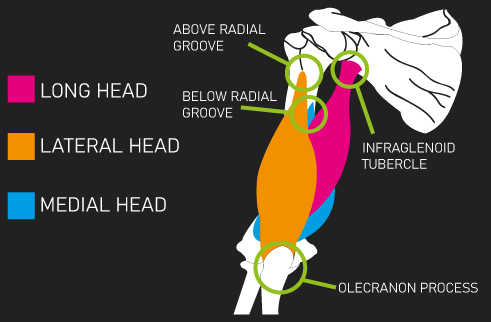
And many compound exercises that train the triceps (like the bench press, push-up, and even dips) involve shoulder extension during the lowering phase of the exercise, a motion that shortens the long head and inhibits it from significantly producing force during the lifting phase.
Isolation exercises such as skull crushers, overhead extensions, and rope pushdowns have all been shown to significantly develop the long head (one and two).
Moreover, recall the Costa et al. study found training with a variety of triceps isolation exercises in a week resulted in growth across more regions of the triceps.
Part III: Conclusion
It’s clear substantial hypertrophy can be achieved with compound exercises only.
Yet the conclusion compound exercises are sufficient for muscle hypertrophy is likely incorrect.
Many muscle groups and regions of a muscle group are likely not optimally trained with compound exercises, hence additional isolation exercises are necessary.
Remember to feel free to check out the Alpha Progression App if you’re interested. Also feel free to check out our free bench press e-book below.

